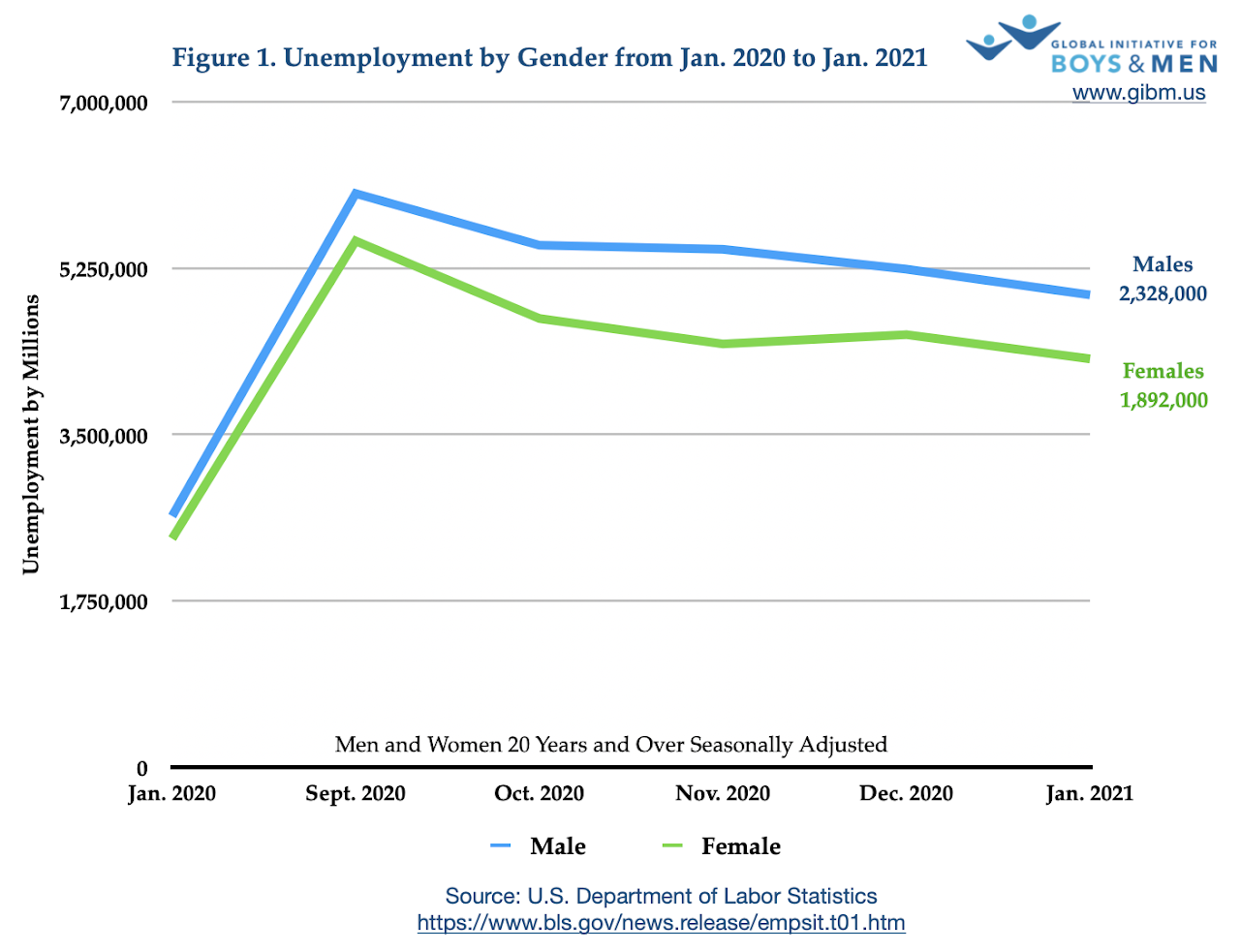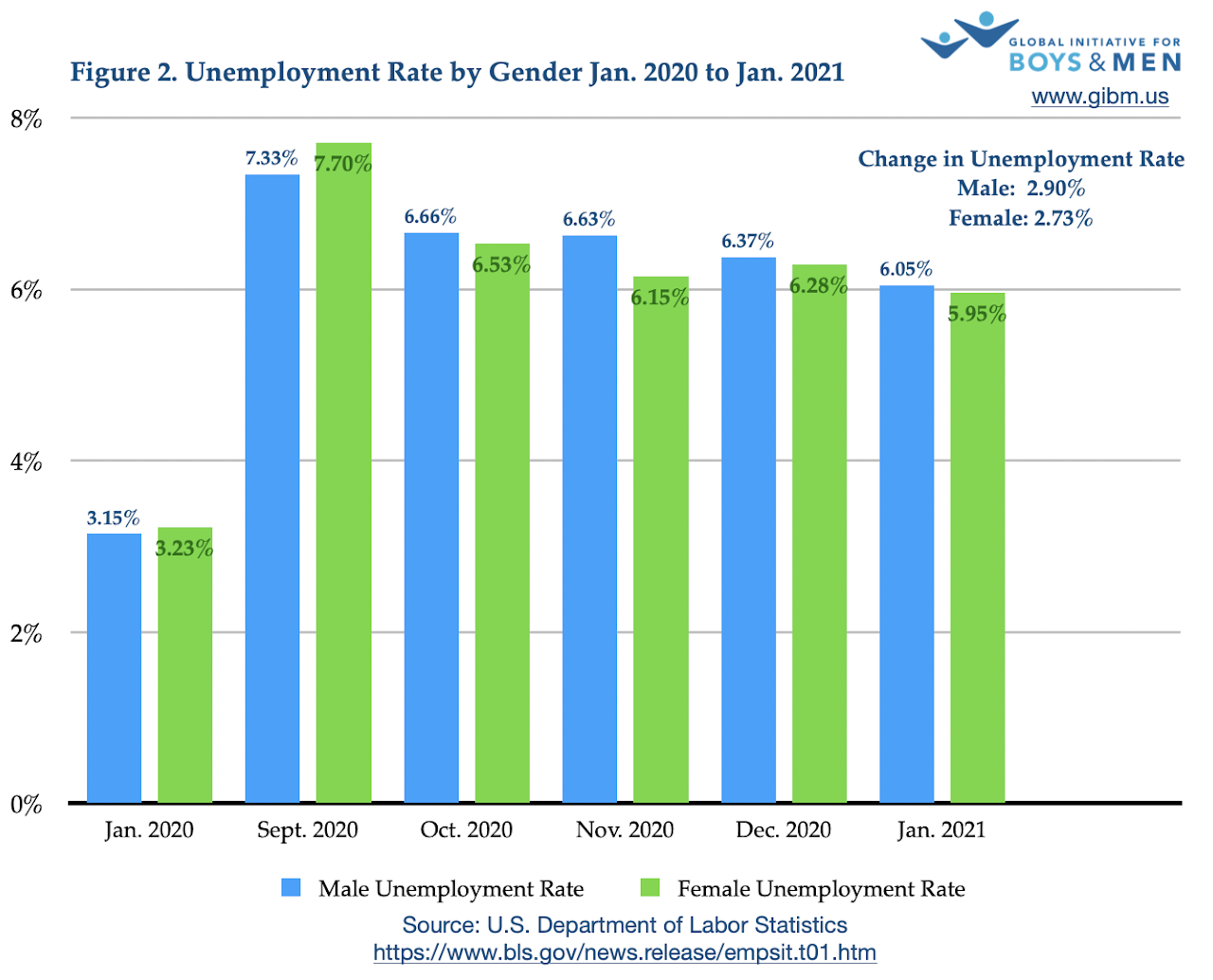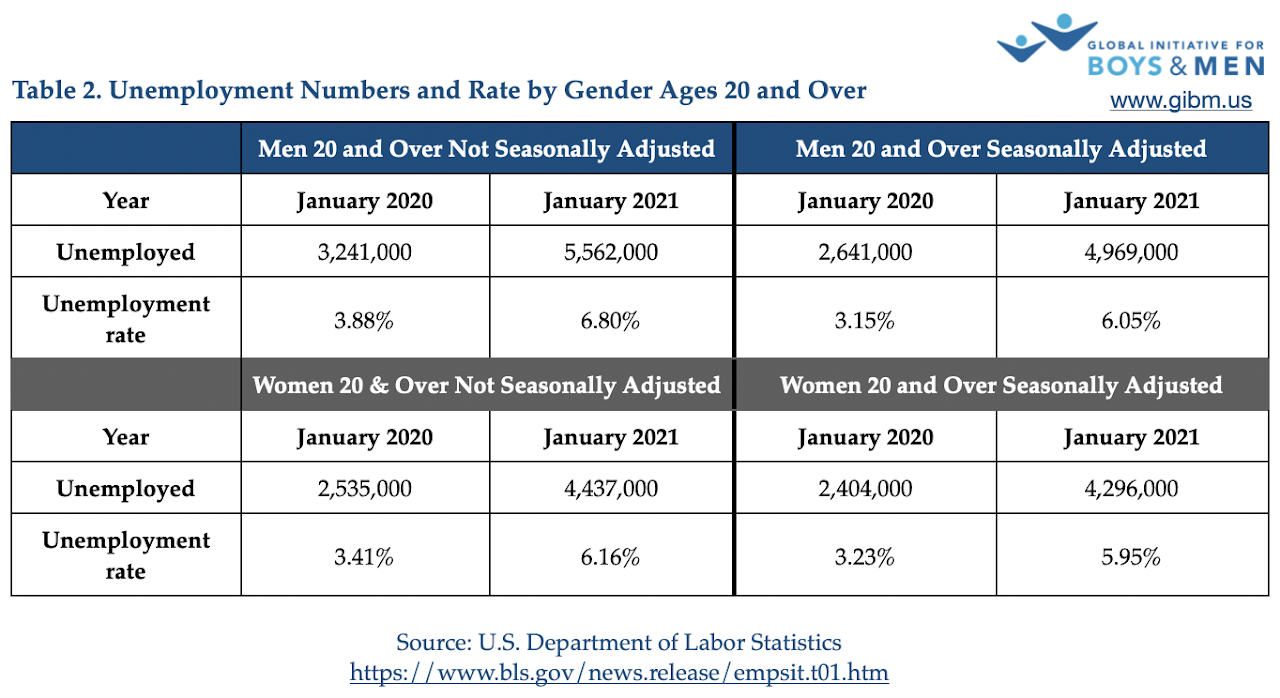There is a secret in American life (and indeed, a secret existing throughout the Developed World) that few people want to talk about–that there are few primary markers of physical, cognitive, educational, neurological, emotional, psychological, and employment health in which females in the aggregate are doing worse than males in the aggregate. More than a decade ago, a number of us in the gender field founded a non-partisan group, The Coalition to Create a White House Council on Boys and Men, to point this aggregate secret out to the Obama White House. To no avail. Then to the Trump White House; again without traction. A few weeks ago, the Biden White House created its new Gender Policy Council, but like similar previous agencies, it is designated and funded to help girls and women, not boys and men.
I am a father of two daughters (no sons), and I applaud every Council, every organization, and everything we do for women and girls. I have written a number of books specifically on girls and women, and have been accepted publicly as a leader in female empowerment. That work will not end for me, ever. Our daughters carry our civilization in their hearts and on their backs, and they need all the support we can give them. Nothing I say in this blog or in any of my work calls for ending programs that help girls and women to instead support boys and men.
But part of the secret is that our sons carry the worlds on their back, and we simply must love them, culturally and socially, as much as we love our daughters. Not to focus on males, too, especially when males are suffering significantly and in the long-term, is an act of political, economic, and cultural betrayal that has consequences, consequences we are seeing already in the violence rates in our country. This is violence we will never get under control if we do not make our shameful secret public and deal with it culture-wide. We would not rob girls and women at all by working on what is happening to boys and men. In fact, we would make female life better by taking better care of male life.
I have been a political moderate/centrist all my adult life. Over the decades I thought having a Democrat in office would finally help boys and men, then as the cultural winds shifted, I thought a Republican would do it, but after multiple Democrat and Republican administrations, I see politicians unafraid of the female secret but afraid of the male. From conversations with politicians over the last twenty years, I know: some do want to help boys and men, but from the political-cultural viewpoint, women and girls are the victims and the vanquished in our culture; men and boys are the villains and victors. That’s what gets just enough votes to keep the politician in office.
But the secret remains–boys and men need our help, not just for the sake of politics, but because male privation is constantly growing. The newest unemployment data from the Covid crisis brings home the secret in a very painful way. Not only are two-thirds of our Covid dead male (https://www.brookings.edu/blog/up-front/2020/05/15/covid-19-much-more-fatal-for-men-especially-taking-age-into-account/), but more men than women are also now unemployed because of Covid shutdown. While you may have seen headlines presenting women as the biggest job losers during this crisis, and while they have lost millions of jobs, the aggregate numbers remain: boys and men are once again suffering great loss, and our leaders will not confront the secret.
I hope that you–no matter your party affiliation and even if you are a parent of daughters not sons, as I am–will write to the Biden White House and congratulate the President for his focus on girls and women through the new Gender Council; I hope, too, you will challenge him to start and use part of the American Rescue Act to fund a White House Council on Boys and Men. I hope, too, you will provide your senators and congresspersons with the statistics you’ll read in this week’s blog post, provided to us by Sean Kullman, the Executive Director of the Global Initiative for Boys and Men. His charts come right off the Department of Labor Statistics, so you can go to that government website and do your own citizen science. Bring your own collective energy to the conversation on behalf of both sexes and all genders.
One way to do that is to dig deep into the new Gender Council’s co-chair letter. Give the co-chairs some feedback. Their mission statement letter is here: https://whitehousegenderpolicycouncil.org/White_House_Gender_Policy_Council-A_Message_from_the_Co-Chairs_March_12_2021.aspx. As you read and respond to the letter, you could note to the co-chairs that in most categories listed in the letter, males are doing as badly or worse than females. Some examples appear in this part of the letter: “Women and girls—and particularly women and girls of color—are bearing the brunt of this pandemic in visible and invisible ways. Women make up an outsized share of our front line workers, face historic levels of unemployment, and are disproportionately shouldering the increased care giving responsibilities created by the pandemic. Women’s participation in the workforce has dropped to the lowest level in more than 30 years.”
Nothing said here is untrue except for the exclusionary bias in each statement that neglects the full truth. In fact, the paragraph should read: “Women and girls and boys and men–and particularly people of color–are bearing the brunt of this pandemic in visible and invisible ways. Women and men make up our front line workers, face historic levels of unemployment, and are shouldering the increased care giving responsibilities created by the pandemic. Women’s and men’s participation in the workforce has dropped to the lowest level in more than 30 years.” In this new paragraph would be room for nuance in which more women are now joining the already large group of men (approximately 9,000,000 men pre-Covid) on the rolls of permanently unemployed while more men are joining women in shouldering increased care giving responsibilities during and post-Covid.
Another part of the letter refers to violence against girls, women, and LGBTQ+ populations and is a welcome focus, but strangely incomplete. Most victims of violence in America are male not female. Boys and men are 6 times more likely to be victims of violence than girls and women. The Bureau of Justice Statistics is just one federal source of full violence statistics. Again, focusing on violence is important, but the letter basically says to Americans that the majority of victims of violence do not count–we will not fund a Council to help them.
Indeed, in Saving Our Sons, you’ll get more statistics in other categories besides economics and violence to use in your response. It is difficult to find a major category of health, wellness, and success where boys are not doing worse than girls, as this new study on the education sector indicates, published by the Brooking Institute by Richard Reeve and his colleagues: https://www.brookings.edu/blog/up-front/2021/01/12/the-unreported-gender-gap-in-high-school-graduation-rates/. See also The Boy Crisis by Warren Farrell and John Gray.
The paucity of national empathy for boys and men is a significant problem that harms both boys and girls, both women and men. It needs to get onto politicians’ radar in a way that does not pit girls against boys, women against men, or anyone against anyone else on the gender spectrum. We have enough acumen and resources to take care of ALL of our citizens, not just the ones we consider politically viable in the short term. If we do not wake up to our national secret, we will have to face the fact that we are choosing “for” one half of our country and “against” the other half, and that is not the right way to run a society. Those of us who, in the ’60s and ’70s, became feminists to fight for women’s equality were ashamed of the way our culture disregarded female needs. By not helping boys and men today, isn’t our civilization doing the same shameful thing it did in the past, but with the sexes switched?
Men Lost More Jobs from 2020 to 2021, But Men & Women Are Both Suffering During Pandemic Economy
by Sean Kullman
More men than women lost their jobs in the past year according to data from the Department of Labor Statistics, but there’s no denying the pandemic’s impact on the economy has taken its toll on men, women, and families (Fig. 1). Vice President Harris addressed the “pandemic [that] has touched every part of our lives. Families everywhere are shouldering a huge burden as homes have become classrooms and child-care centers, and uncertainty plagues each day,” she said in a Washington Post editorial on February 12.
Although the Vice President addressed “families everywhere,” she immediately turned her attention to women affected by the pandemic, highlighting a Reuter’s article by Jonnelle Marte as evidence that women are the one’s suffering most during the pandemic and beginning her editorial with a story about a female hotel worker with a wife, son, and mother who rely on her income. The woman, M. Rocha, was furloughed from her job and her story is symbolic of the men and women across the country looking to return to work and needing to support their families.
Vice President Harris continued her narrative, alluding to personal experiences shaped by the hardships of single-motherhood and childcare she experienced as a child before launching into the programs that will provide women relief.
Ms. Rocha, like so many other American families, faces serious challenges, but Harris’s editorial selectively forgoes the challenges of male workers and their families at a time when male unemployment continues to rise at rates greater than females. The rhetoric from the White House concerning unemployment and procedure is alienating on many levels as discussions and policies regarding gender and unemployment are incomplete narratives.
According to the U.S. Department of Labor Statistics, men lost more jobs over the past year than women. Neither Harris nor Marte address this downturn in their articles. This specious laxity speaks to a larger political favoritism also recognized in an extensive White House Gender Policy Council on women and girls that discriminates against boys and men at a time when COVID deaths, opioid deaths, suicide deaths, educational challenges, and unemployment impact boys and men in significantly greater numbers than women. (These issues have been addressed in articles by the Global Initiative for Boys & Men over the past month.)
From January 2020 to January 2021, men lost 436,000 more jobs than women: men lost 2.32 million jobs and women lost 1.89 million jobs. The male unemployment rate (6.05%) was slighter higher than the female unemployment rate (5.95%) in January 2021. Over the course of the past year, men’s unemployment rose 2.9% (from 3.15% to 6.05%) and women’s unemployment rose 2.73% (from 3.23% to 5.95%). Yet much of the discussion remains centered around political constituencies that put the Biden-Harris ticket in the White House as the White House moves swiftly on gender policies that polarize males in the work force and their families.
Male unemployment rose at higher numbers and rates than females (Table 1 & Table 2) in not-seasonally-adjusted and seasonally-adjusted unemployment numbers for men and women 16 and over and 20 and over.
To be more precise about the unemployment numbers, it’s important to recognize that men and women are equally suffering economic hardships during the pandemic. For the Vice President of the United States to discuss economic “struggles” without including the hardships of men, the White House disregards the women and men who count on male incomes for immediate and extended family members. The politics of Harris’s editorial come at a time when unity and an open discourse regarding male and female unemployment demands greater transparency, attention, and compassion.














